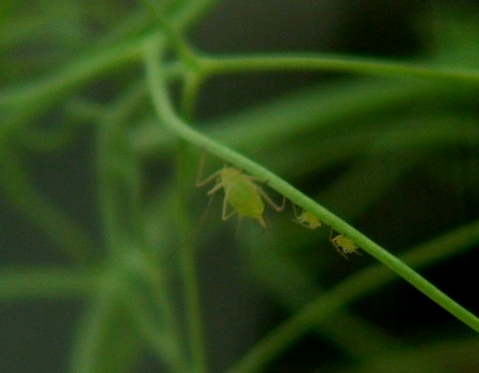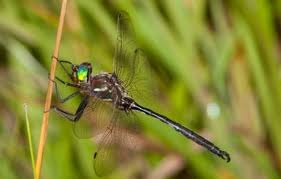Predator-Prey DynamicsDiffusion LimitationIn physical chemistry, it has been demonstrated that when the rate of reaction is fast relative to the rate of diffusion, the process is, in effect, governed by the rate of diffusion rather than the reaction rate, or is diffusion-limited. Cuddington & Yodzis (2001, 2002) used individual-based simulations to examine the effects of complex, branching spatial architecture on predator-prey dynamics. These structures do not subdivide populations, but do affect the mobility of individuals. It was found that simulated predators are less successful and reproduction is slower in low dimensional environments compared to 3D environments because of anomalously slow rates of movement. Plant MorphologyHerbivorous insects and their prey interact on the complicated surfaces offered by plants. Diffusion-limitation caused by plant shape could affect the dynamics of these insects. But in addition, plants also alter the microclimate underneath their canopy, affecting factors such as humidity and temperature. We are investigating these potential effects of plant morphology on predator-prey dynamics using isogenic peas that differ in morphology, aphids and predators such as ladybugs. So far we have determined that plant shape does alter predator consumption rates, but not in the way we first predicted! Predators do best on plants with many edges that allow them to maintain a firm grip. We are conducting large-scale greenhouse experiments to see if this effect on predator success scales up to alter pea aphid population dynamics. Engineering predatorsThe potential effect of plant morphology on predator-prey dynamics is a type of ecosystem engineering. However, either the predator or the prey species could also alter the physical environment. In fact, our mathematical models suggest that if the predator alters the habitat in a way that benefits the prey, then the predator-prey relationship could actually be a net positive for the prey species. However, the engineering impact of the predator on the prey will also depend on the abiotic conditions. As we simultaneously pursue models and laboratory tests of this phenomena, we are also investigating some important applications. Hine's emerald dragonfly is endangered in Canada and the US, and may have a complex relationship with burrowing crayfish. The crayfish dig burrows that reach the water table, and so provide the larval dragonflies with a refuge from drought conditions. But crayfish also consume the larvae, suggesting that crayfish provide a net benefit to the dragonfly population only under some climate conditions. |
   |
Publications
- Reynolds, P., and K. Cuddington. (2012) Effects of plant gross morphology on predator consumption rates. Environmental Entomology 41:508-515.
- Reynolds, P., and K. Cuddington. (2012) Effects of plant gross morphology on predator searching behaviour. Environmental Entomology 41:516-522.
- Buchman, N., and Cuddington, K. (2009) Influences of pea morphology and interacting factors on pea aphid (Homoptera: Aphididae) reproduction. Environmental Entomology 38: 962-970.
- Cuddington, K., and P. Yodzis. (2002) Predator-prey populations and movement in fractal environments. American Naturalist 160: 119-134.
- Cuddington, K., and P. Yodzis. (2000) Diffusion-limited predator-prey dynamics in Euclidean environments: An allometric individual-based model. Theoretical Population Biology 58: 259-278.
Other Reading
- Kareiva, P., and Robert Sahakian. (1990) Tritrophic effects of a simple architectural mutation in pea plants .Nature: 345: 433-434.
- Organized Oral Session 16: Linking data and theory in dendritic ecological networks: from ecological problems to rapid understanding , was organized by Evan H. Campbell Grant, with William F. Fagan and Winsor H. Lowe as co-organizers, and held during the 2009 ESA Annual Meeting in Albuquerque, New Mexico, on 4 August 2009.
- Pintor, L. M., and Soluk, D. A. (2006). Evaluating the non-consumptive, positive effects of a predator in the persistence of an endangered species. Biological conservation, 130: 584-591.